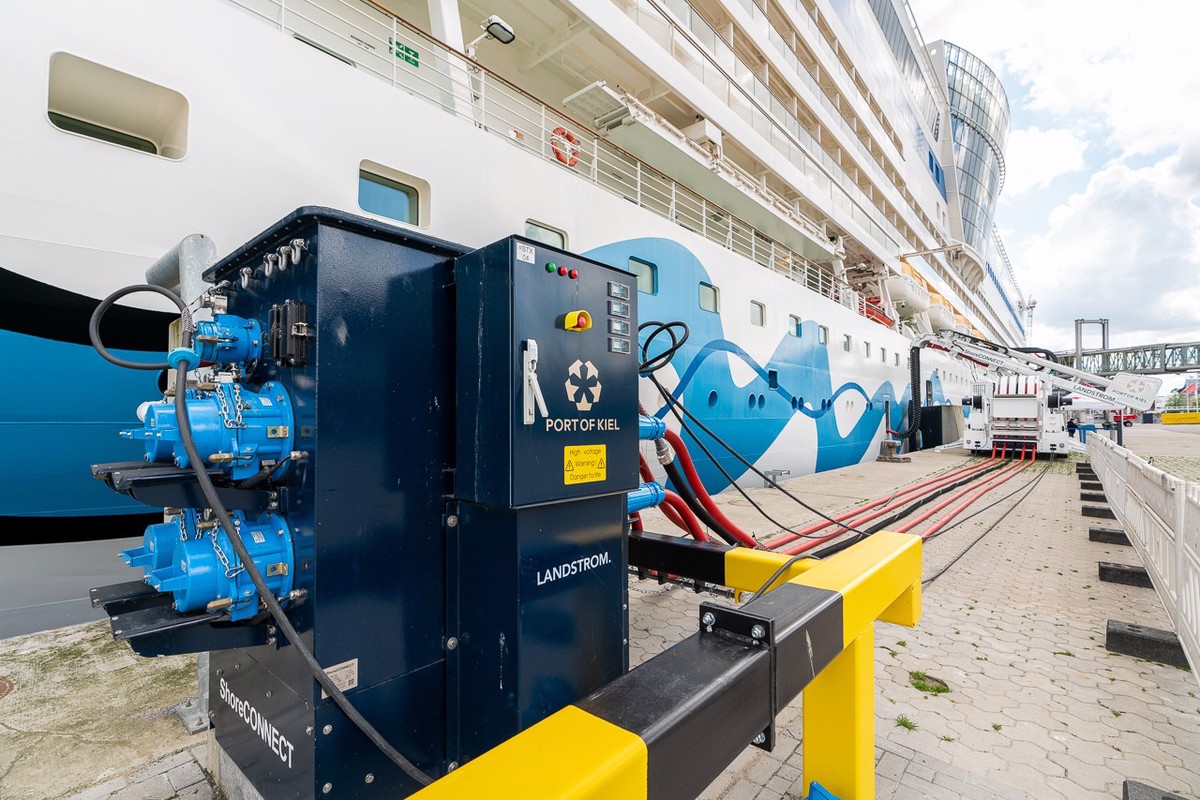The Week in Alt Fuels: Plug-in port calls going mainstream
One of the proposals to the IMO's MEPC 81 next week focuses on shore power, a topic that is becoming increasingly popular in maritime discussions as more ports and governments encourage this as a near-term emission reduction measure.
 PHOTO: A shore power unit at the Port of Kiel. Siemens
PHOTO: A shore power unit at the Port of Kiel. Siemens
The International Maritime Organisation (IMO) has been asked to update the shore power regulations in its 81st Marine Environment Protection Committee (MEPC 81) session next week.
In a proposal to IMO policymakers, two oil and tanker associations called for standardising shore power output for tankers, and to mandate keeping cables away from cargo transfer equipment to ensure the safety of vessels and crew. The Oil Companies International Marine Forum (OCIMF) and the International Association of Independent Tanker Owners (INTERTANKO) also proposed that port authorities should decide on shore power locations, while stressing that thorough risk assessments need to be carried out beforehand.
Switching from fossil-based fuels to bio and synthetic alternatives with zero-emission potential is widely believed to lead to significant reductions in maritime emissions. But challenges like limited fuel availability, inadequate bunkering infrastructure and regulatory gaps may delay this transition for some time still. In the meantime, alternative measures like shore power are being proposed in an attempt to curb shipping emissions.
Ships need power for many different onboard operations and equipment while docked at berth. These operations can be powered from the electrical grid in the port by connecting to shore power, without relying on the ship's own power supply. This can reduce the vessel's overall fuel consumption and lower its well-to-wake emissions in the near-term, even if it does not have a dramatic impact on global shipping emissions.
In fact, the use of shore power can “reduce emissions by up to 98%, depending on the mix of energy sources, while a ship is in port,” the Cruise Lines International Association said in a statement last year. Many governments and ports are mandating and encouraging shore power use to reduce shipping and port emissions around the world, and there are currently 118 of these shore power facilities in operation, according to data from classification society DNV.
The New York City Council has now mandated cruise ships to use shore power facilities when docked at the city’s terminals. And Norway's government has granted a total of NOK 143 million ($13.63 million) for 17 shore power projects across Norwegian ports. The recipients include the ports of Kristiansand, Trondheim and Nordkapp, as well as shore power providers Havnekraft and Fjuel.
Nearly 75% of the cruise calls to Canada's Port of Vancouver last year were shore power-enabled. This is a steady rise from around 50% in 2019, the port authority said. Meanwhile, the Spanish port of Barcelona expects to start offering shore power to container ships calling at its Hutchison Ports BEST terminal from July. Six modules can allow up to two container ships to connect simultaneously. Danish shipping firm DFDS has also installed shore power at its Vlaardingen terminal in the Port of Rotterdam. It will be powered by wind and solar energy.
An expedition cruise ship owned by German cruise line Hapag-Lloyd Cruises tested a shore power connection in the German Port of Kiel. “From now on, the expedition ship can obtain shore power anywhere in the world, wherever this energy supply is offered,” the company said.
By Konica Bhatt
Please get in touch with comments or additional info to news@engine.online





